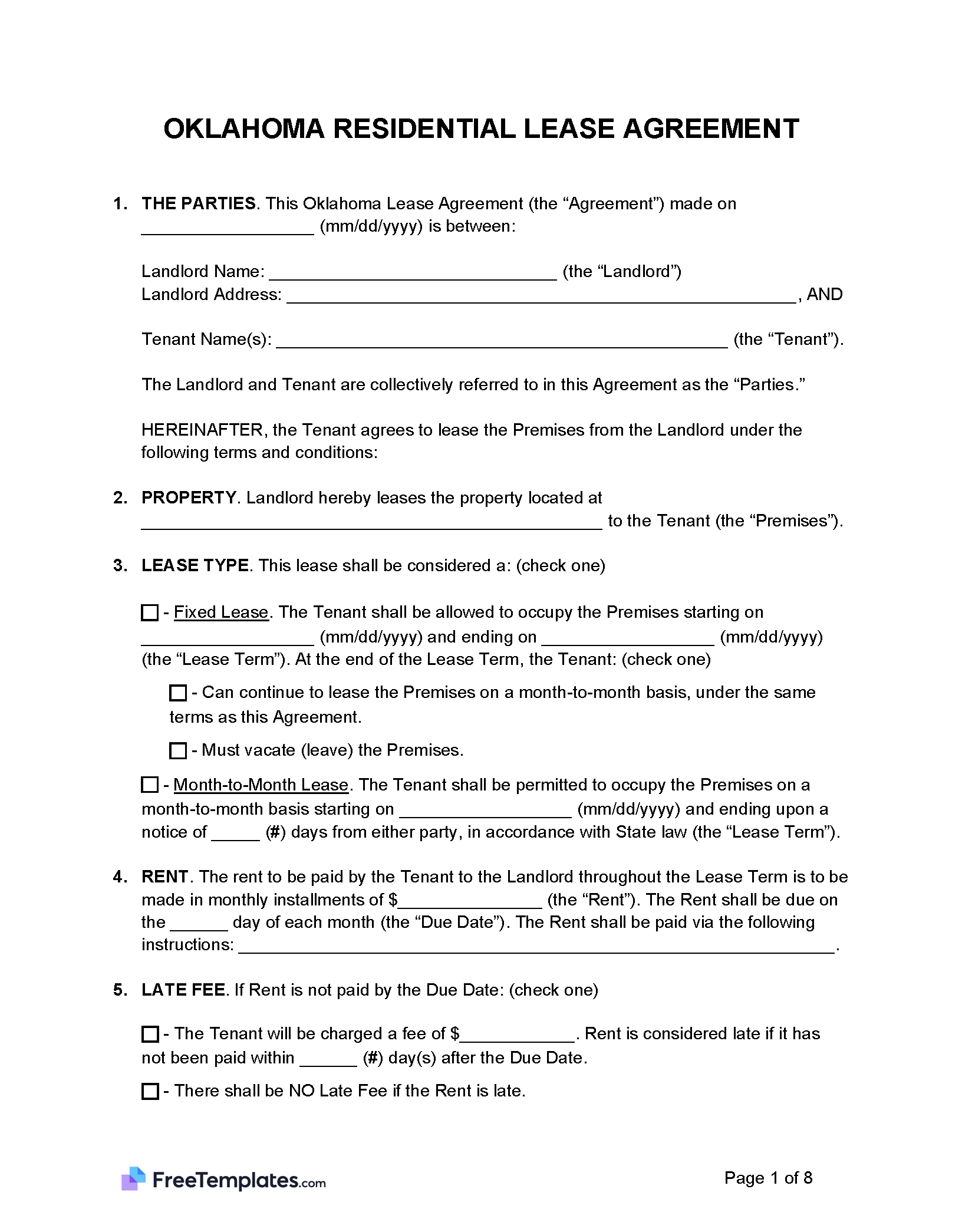By Type (6)
 Standard Lease Agreement – A binding agreement between a landlord and a tenant for the use of property rental over a specific period of time. Standard Lease Agreement – A binding agreement between a landlord and a tenant for the use of property rental over a specific period of time.
|
 Commercial Lease Agreement – Used when a business leases a building for retail, industrial, or office space. Commercial Lease Agreement – Used when a business leases a building for retail, industrial, or office space.
|
 Month-to-Month Lease Agreement – A lease that typically renews each month and can be terminated by the landlord or tenant with a 30-day notice from either. Month-to-Month Lease Agreement – A lease that typically renews each month and can be terminated by the landlord or tenant with a 30-day notice from either.
|
 Rent-to-Own Agreement – A tenant can purchase the property in a way that is similar to a standard lease. Rent-to-Own Agreement – A tenant can purchase the property in a way that is similar to a standard lease.
|
 Roommate Agreement – A disclosure between two people sharing a space that sets out duties, rules, and responsibilities. Roommate Agreement – A disclosure between two people sharing a space that sets out duties, rules, and responsibilities.
|
 Sublease Agreement – A lease where the tenant chooses to rent out the property to another renter. Sublease Agreement – A lease where the tenant chooses to rent out the property to another renter.
|
Disclosures (4)
Lead-Based Paint Disclosure – This form is required for renting any home built before 1978 and must be given to the tenant before their move-in date.
Landlord’s Contact Details – The names and contact information of any landlord, property owner, or manager must be made available to the tenant and listen on the lease agreement. (§ 41.116)
Flooding Disclosure – The landlord must disclose to the renter if the property they are leasing has been in a flood in the last 5 years. The tenants shall sign this before move-in day. (§ 41-113a)
Methamphetamine Disclosure – The landlord is required to disclose any known manufacturing or production of methamphetamine on the property. (§ 41-118(C))
Security Deposit
Maximum Amount – There is not a maximum amount a landlord may charge for a security deposit in Oklahoma.
Returning to Tenant – It is critical for a tenant to contact the landlord after they move out, or they may not receive their deposit back. After being notified by the tenant, the landlord has 45 days to return the security deposit. § 41-115(B) If the landlord is not contacted within 6 months, they may keep the total deposit amount.
- Itemized List – The renter must be provided with a list of any damages to the property that result in any deductions made to the security deposit. (§ 41-115(B))
Interest – There are no regulations on whether a security deposit needs to collect interest for the renters.
Separate Bank Account – In Oklahoma, the security deposit must be held in an escrow account at an insured bank or institution. (§ 41-115(A))
Landlord Access
General Access – A 24-hour notice is required for a landlord to enter their leased property. (§ 41-128(C))
Emergency Access – No notice is required for a landlord to enter their property if there is an emergency. (§ 41-128(C))
Paying Rent
Grace Period – The grace period for paying rent late is not mentioned in Oklahoma’s laws.
Maximum Late Fee – The late fees a landlord may charge their tenants if they pay rent late are not regulated.
Returned Checks (NSF) – Writing a bad check may result in a monetary fee imposed by the landlord; however, that amount must be disclosed in the rental lease agreement.
Withholding Rent – If the landlord is notified of a safety issue at the rental property and does not address it within 14 days, the renter may deduct the amount to remedy the issue from their rent. (§ 41-121(B))
Reasons for Eviction (5)
Non-Payment of Rent – If the rent payment is not paid on time, the tenant may be given a 5-day notice to quit or pay. (§ 41-131(B))
Non-Compliance – Not complying with the lease agreement may result in a 15-day notice to quit or comply unless remedied in 10 days. (§ 41-132(B))
Tenant Maintenance – If the tenant fails to maintain a property and is warned by the landlord to fix the issue, they may be given a 10-day notice to remedy the issue and may be billed. (§ 41-132(A))
Lockouts – A court order must be issued for the landlord to lock out a tenant from the property. (§ 41-123)
Leaving Before the End Date – If the tenant abandons the property, they are responsible for any rent due until the end of the lease agreement. The landlord must also try to rent the property out to another tenant. (§ 41-129(B))

